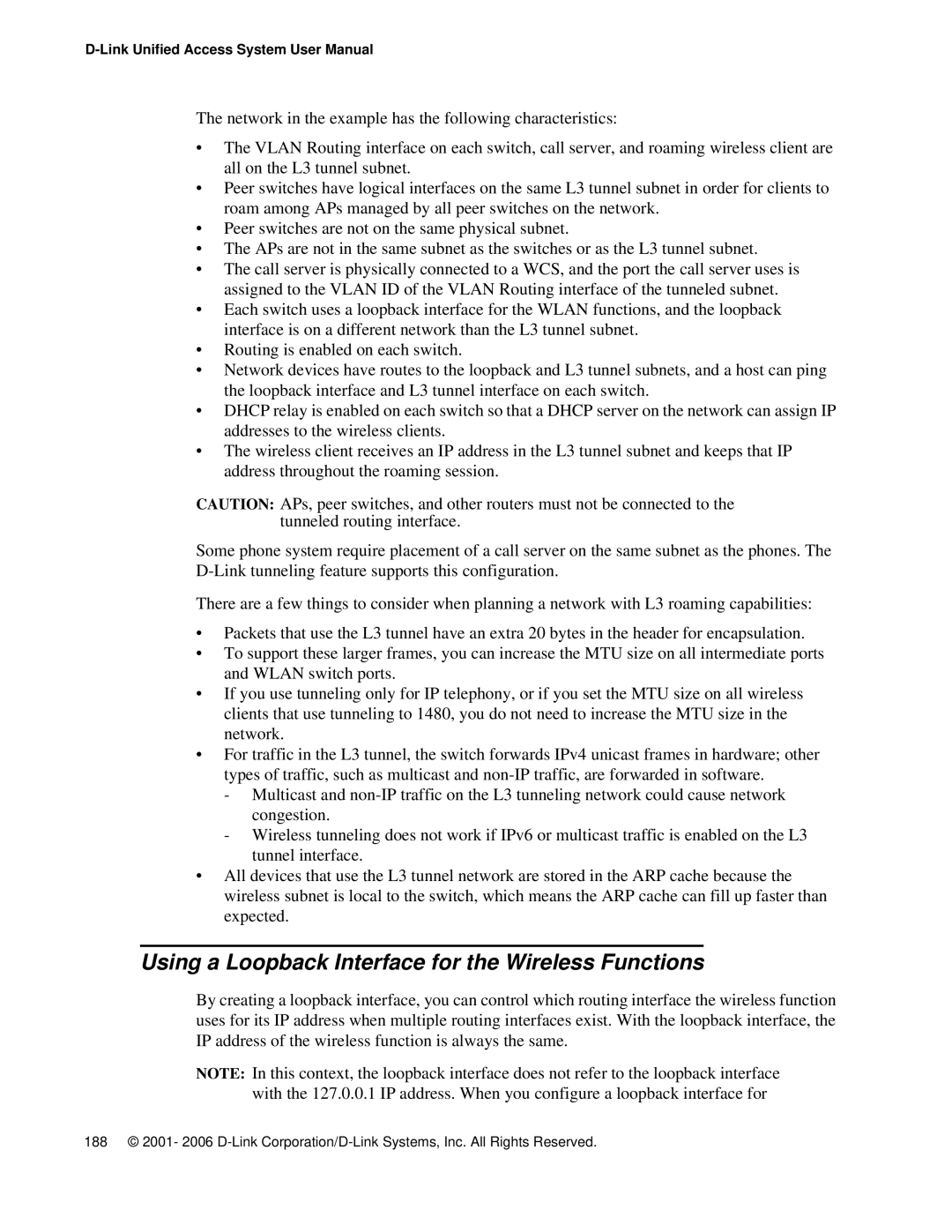The network in the example has the following characteristics:
•The VLAN Routing interface on each switch, call server, and roaming wireless client are all on the L3 tunnel subnet.
•Peer switches have logical interfaces on the same L3 tunnel subnet in order for clients to roam among APs managed by all peer switches on the network.
•Peer switches are not on the same physical subnet.
•The APs are not in the same subnet as the switches or as the L3 tunnel subnet.
•The call server is physically connected to a WCS, and the port the call server uses is assigned to the VLAN ID of the VLAN Routing interface of the tunneled subnet.
•Each switch uses a loopback interface for the WLAN functions, and the loopback interface is on a different network than the L3 tunnel subnet.
•Routing is enabled on each switch.
•Network devices have routes to the loopback and L3 tunnel subnets, and a host can ping the loopback interface and L3 tunnel interface on each switch.
•DHCP relay is enabled on each switch so that a DHCP server on the network can assign IP addresses to the wireless clients.
•The wireless client receives an IP address in the L3 tunnel subnet and keeps that IP address throughout the roaming session.
CAUTION: APs, peer switches, and other routers must not be connected to the tunneled routing interface.
Some phone system require placement of a call server on the same subnet as the phones. The
There are a few things to consider when planning a network with L3 roaming capabilities:
•Packets that use the L3 tunnel have an extra 20 bytes in the header for encapsulation.
•To support these larger frames, you can increase the MTU size on all intermediate ports and WLAN switch ports.
•If you use tunneling only for IP telephony, or if you set the MTU size on all wireless clients that use tunneling to 1480, you do not need to increase the MTU size in the network.
•For traffic in the L3 tunnel, the switch forwards IPv4 unicast frames in hardware; other types of traffic, such as multicast and
-Multicast and
-Wireless tunneling does not work if IPv6 or multicast traffic is enabled on the L3 tunnel interface.
•All devices that use the L3 tunnel network are stored in the ARP cache because the wireless subnet is local to the switch, which means the ARP cache can fill up faster than expected.
Using a Loopback Interface for the Wireless Functions
By creating a loopback interface, you can control which routing interface the wireless function uses for its IP address when multiple routing interfaces exist. With the loopback interface, the IP address of the wireless function is always the same.
NOTE: In this context, the loopback interface does not refer to the loopback interface with the 127.0.0.1 IP address. When you configure a loopback interface for
188 © 2001- 2006
